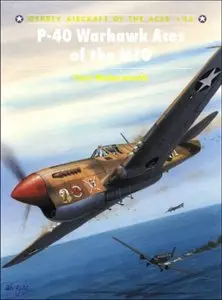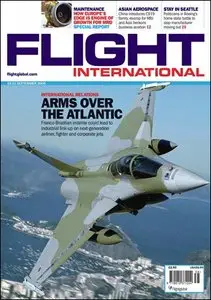| Su | Mo | Tu | We | Th | Fr | Sa |
|---|---|---|---|---|---|---|
| 30 | 31 | 1 | 2 | 3 | 4 | 5 |
| 6 | 7 | 8 | 9 | 10 | 11 | 12 |
| 13 | 14 | 15 | 16 | 17 | 18 | 19 |
| 20 | 21 | 22 | 23 | 24 | 25 | 26 |
| 27 | 28 | 29 | 30 | 1 | 2 | 3 |
Attention❗ To save your time, in order to download anything on this site, you must be registered 👉 HERE. If you do not have a registration yet, it is better to do it right away. ✌

What’s in a name? More than you think.
Your name isn’t just a label – it’s a vibe, a map, a story written in stars and numbers.
At KoalaNames.com, we’ve cracked the code behind 17,000+ names to uncover the magic hiding in yours.
✨ Want to know what your name really says about you? You’ll get:
🔮 Deep meaning and cultural roots
♈️ Zodiac-powered personality insights
🔢 Your life path number (and what it means for your future)
🌈 Daily affirmations based on your name’s unique energy
Or flip the script – create a name from scratch using our wild Name Generator.
Filter by star sign, numerology, origin, elements, and more. Go as woo-woo or chill as you like.

Have you ever wondered what your name says about you? At KoalaNames.com, we’ve decoded over 17,000 names to uncover the cosmic and numerical energies woven into every letter.
Our unique blend of astrology and numerology delivers:
- A deep dive into your name’s meaning and origin
- Zodiac-based personality insights tied to your birth chart
- Personalized numerology profile revealing your life path number
- Daily guidance and affirmations aligned with your name’s vibrations
- Use our Name Generator, tweak parameters like zodiac sign, life-path number, cultural origin, elemental balance, and more to craft the perfect name
The Wall Street Journal - 14 September 2009 (Europe)
Date: 14 Sep 2009 23:16:29
The Wall Street Journal is an English-language international daily newspaper published by Dow Jones & Company, a division of News Corporation, in New York City, with Asian and European editions. As of 2007, it has a worldwide daily circulation of more than 2 million, with approximately 931,000 paying online subscribers. It was the largest-circulation newspaper in the United States until November 2003, when it was surpassed by USA Today. Its main rival is the London-based Financial Times, which also publishes several international editions.
USA Today - 14 September 2009
Date: 14 Sep 2009 23:03:28
USA TODAY is a national American daily newspaper published by the Gannett Company. It was founded by Allen 'Al' Neuharth. The paper has the widest circulation of any newspaper in the United States (averaging over 2.25 million copies every weekday), and among English-language broadsheets, it comes second worldwide, behind only the 2.6 million daily paid copies of The Times of India. USA Today is distributed in all fifty states, the District of Columbia, Puerto Rico and Guam.
Aircraft of the Aces 049, Croatian Aces of World War 2
Date: 14 Sep 2009 22:58:48
Aircraft of the Aces 049, Croatian Aces of World War 2
Authors: Boris Ciglic & Dragan Savic, Illustrated by: John Weal
Osprey Publishing | October 18, 2002 | ISBN-10: 1841764353 | 96 Pages | PDF | 19.7 MB
Authors: Boris Ciglic & Dragan Savic, Illustrated by: John Weal
Osprey Publishing | October 18, 2002 | ISBN-10: 1841764353 | 96 Pages | PDF | 19.7 MB
Osprey Publishing Description:
Initially flying Italian-supplied Fiat G.50s, the Croat forces suffered heavy losses during 1942 whilst flying alongside JG 52 in the southern sector of the Russian front. Despite this, a significant number of kills fell to future aces such as Cvitan Galic and Mato Dubovak during this time, and when the units re-equipped with Bf 109G-10s in 1943, battle-seasoned Croat pilots started to rack up impressive scores. This book reveals how, by 1944, Croat air groups were defending Yugoslavia from British and American air raids, and in the final months of the war a handful of surviving pilots fought on until final defeat in May 1945.
Aircraft of the Aces 043, P-40 Warhawk Aces of the MTO
Date: 14 Sep 2009 22:56:03
Aircraft of the Aces 043, P-40 Warhawk Aces of the MTO
Author: Carl Molesworth, Illustrated by: Jim Laurier
Osprey Publishing | January 25, 2002 | ISBN-10: 1841762881 | 96 Pages | PDF | 67.1 MB
Author: Carl Molesworth, Illustrated by: Jim Laurier
Osprey Publishing | January 25, 2002 | ISBN-10: 1841762881 | 96 Pages | PDF | 67.1 MB
Osprey Publishing Description:
Thrown into action following the Torch landings of late 1942, the ‘green’ American pilots flying the obsolescent P-40F suffered cruelly at the hands of seasoned German fighter pilots flying superior machines. Those that survived learnt quickly, and a handful of Warhawk pilots succeeded in making ace by the time the Axis forces surrendered in North Africa. The action then shifted to Sicily and Italy, and the P-40 remained in service until mid-1944. This book charts the careers of the 23 men who succeeded in making ace during that time, despite the advent of much better P-47 and P-51 fighters.
Бьянка - За тобой
Date: 14 Sep 2009 22:55:58
Бьянка - За тобой
MPEG4 Video (H264) 480x320 29.97fps | AAC 44100Hz stereo | mkv | 480 x 320 | 4 min 19 s | 23 Mb
MPEG4 Video (H264) 480x320 29.97fps | AAC 44100Hz stereo | mkv | 480 x 320 | 4 min 19 s | 23 Mb
Eva Cassidy - Live At Blues Alley (1997)
Date: 14 Sep 2009 22:55:40
Eva Cassidy - Live At Blues Alley (1997) [Repost]
Blues / Jazz | MP3 CBR 192 Kbps | 80 MB | Cover | RS.com
Blues / Jazz | MP3 CBR 192 Kbps | 80 MB | Cover | RS.com
Flight International - 15-21 September 2009
Date: 14 Sep 2009 22:54:07
Flight International (or Flight) is a global aerospace weekly publication. Founded in 1909, it is the world's oldest continuously-published aviation news magazine. With a team of journalists and correspondents around the world, it provides global coverage of aerospace manufacturing and aviation operations in the areas of air transport, business aviation, defense, general aviation and spaceflight. Features include the magazine's famous aircraft cutaway illustrations, flight tests of new aircraft, in-service reports and sector-by-sector analysis.
Dr.Alban - It's My Life
Date: 14 Sep 2009 22:52:26
Dr.Alban - It's My Life
MPEG2 Video 480x576 (4:3) 25.00fps 6960Kbps | MPEG Audio 48000Hz stereo 192Kbps | avi | 480 x 576 | 3 min 48 s | 94 mb
MPEG2 Video 480x576 (4:3) 25.00fps 6960Kbps | MPEG Audio 48000Hz stereo 192Kbps | avi | 480 x 576 | 3 min 48 s | 94 mb
Cracking the Da Vinci Code (2004)
Date: 14 Sep 2009 22:52:12
Cracking the Da Vinci Code (2004)
DVDRip | AVI | XviD ISO MPEG-4 - 1908 KB/s | 25.000 fps | 720 x 544 | AC3 @ 192 KB/s @ Stereo | 01:28:07
1.36 GB
Genre: Documentary
DVDRip | AVI | XviD ISO MPEG-4 - 1908 KB/s | 25.000 fps | 720 x 544 | AC3 @ 192 KB/s @ Stereo | 01:28:07
1.36 GB
Genre: Documentary
Author Simon Cox takes you on a journey to the action sites of Dan Brown's novel and introduces the authors and thinkers that were Brown's inspiration. An EXTRA section delves into a deeper mystery behind The Da Vinci Code.
Inna - Amazing
Date: 14 Sep 2009 22:51:22
Inna - Amazing
XVID 640x360 25.00fps 2217Kbps | Dolby AC3 48000Hz stereo 256Kbps | avi | 640 x 360 | 3 min 25 s | 60 Mb
XVID 640x360 25.00fps 2217Kbps | Dolby AC3 48000Hz stereo 256Kbps | avi | 640 x 360 | 3 min 25 s | 60 Mb















